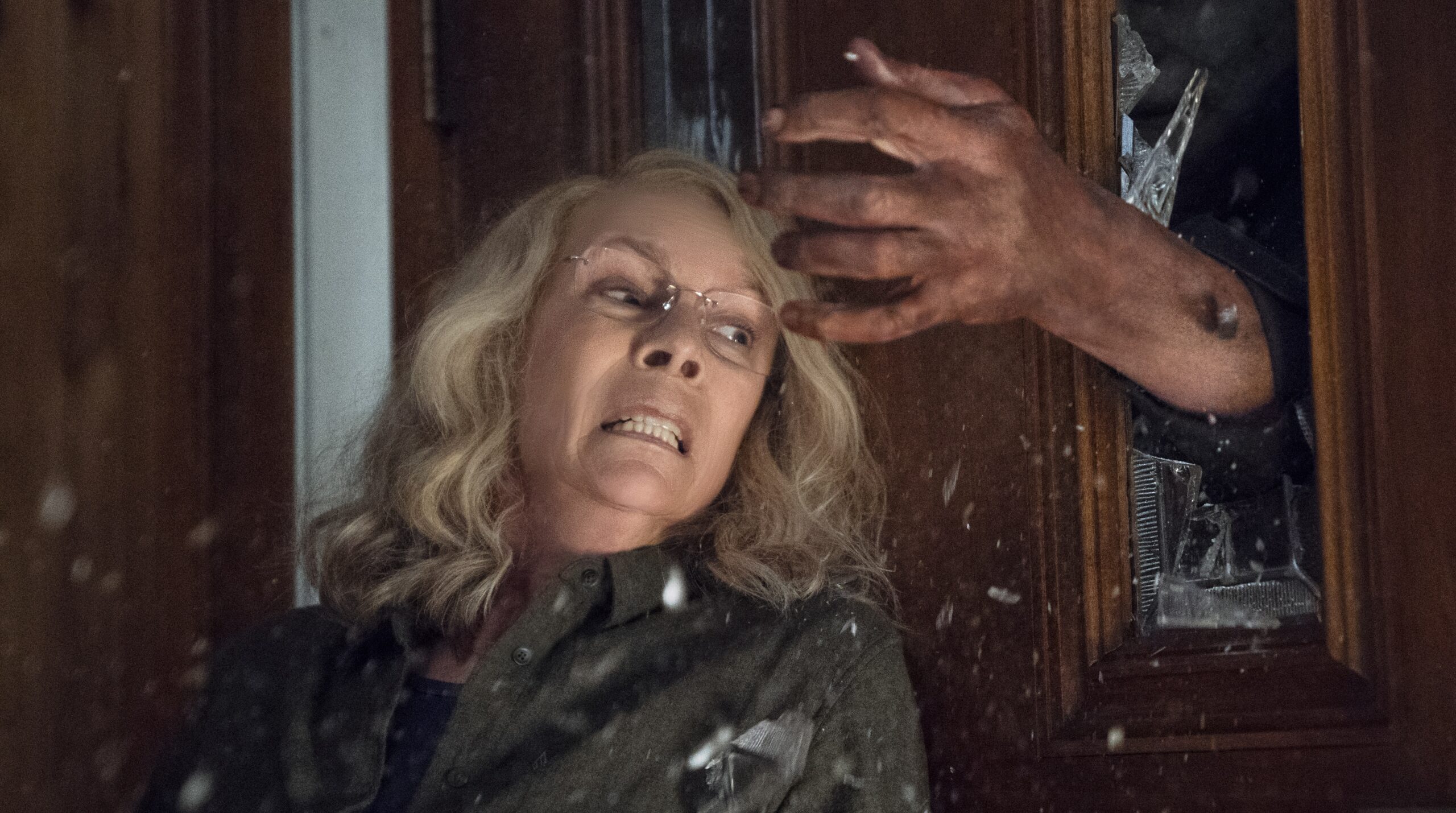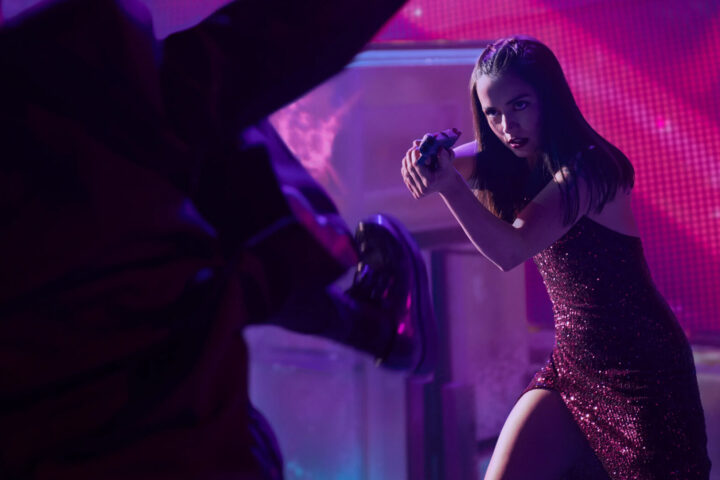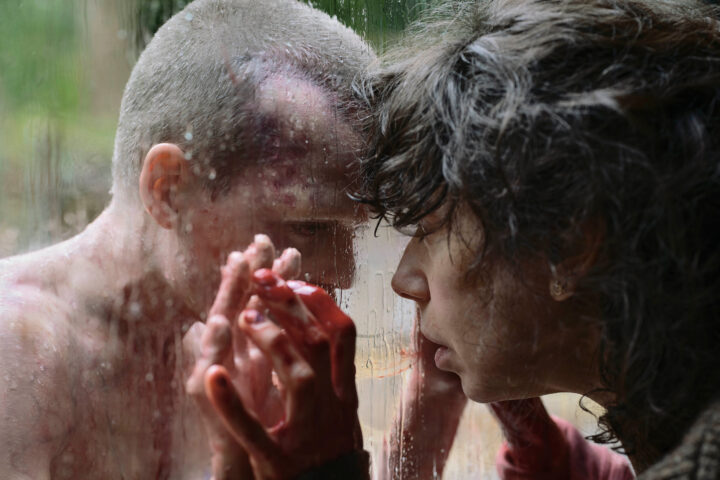So much for the hype surrounding director David Gordon Green’s declared return to form in the new Halloween, less a companion piece to John Carpenter’s 1978 classic than a barely competent homage to the lousy movies it spawned. The new picture has one idea, and it’s not a good one—Jamie Lee Curtis as a reclusive vigilante—in service of a tired series of throwaway murders that would barely pass muster in any of the franchise’s existing generic sequels. This Halloween isn’t scary, particularly engaging or much of a throwback.
Picture opens with a pair of gung-ho podcast journalists (Jefferson Hall, Rhian Rees) visiting aged killer Michael Myers (Nick Castle), incarcerated at his old home of Smith’s Grove Warren County Sanitarium. They want the scoop on Michael’s psyche, so what do they do? The taunt him with the mask he wore during his notorious murder spree. Good idea. Michael’s longtime doctor, a sort of Sam Loomis 2.0., is named Sartain (Haluk Bilginer), a character whose late picture logic lapses really call his own cognitive abilities into question.
The journalists’ prodding yields no visible reaction from Michael so they move on to Laurie Strode (Curtis) the sole survivor of Michael’s original massacre and who over four decades has become an agoraphobic, loose-cannon granny, hiding out in a maximum-security fortress of a house in the woods, stockpiling all manner of guns and mannequins for target practice. That Laurie tolerates their invasive questions feels patently absurd.
Laurie’s life has been a mess—two failed marriages and nothing to speak of other than her death wish for Michael. She has, however, managed to have a daughter, Karen (Judy Greer), herself damaged over her paranoid upbringing, and a granddaughter, Allyson (Andi Matichak), in the National Honor Society and who, like everyone in the picture, chastises Laurie to “get over it,” which seems odd in a scene where “grandmother,” as she’s awkwardly called throughout, has just gifted her a large sum of money.
Strode lies in wait for the moment when she and Michael will meet again—recall the classroom literature discussion of fate in the original—and on that day she plans to kill him. It turns out she doesn’t have to wait long.
As tends to happen, a prisoner transport turns into a bus crash and Michael speedily makes his way back to Haddonfield where the movie’s true agenda—random killings and doses of blood in lieu of any suspense—ignites.
Co-screenwriters Green, Danny McBride and Jeff Fradley predictably check off requisites: obnoxious teens, CGI gore, one-scene victims, incompetent cops (including Will Patton), Michael sneaking into an open door to bludgeon someone with a hammer or drive a butcher knife through the back of a head. There’s even an adolescent murder. There is no rhyme nor reason to any of this.
In the picture’s final showdown, much is made of a secret basement safe room, bizarrely revealed after a bullet is intentionally discharged through the floor above. The movie manages just one clever scene involving a motion sensor light, a lawn and a vanishing—then reappearing killer—but that is where the suspense begins and ends.
Curtis was arguably more interesting as the same character in 1998’s Halloween H20. She’s back this time as producer and in a role with obvious empowerment dimensions, and it would be both gracious and disingenuous to say that this Halloween, with the usual gratuitous slashings, is any sort of feminist polemic. Carpenter contributed the score, which sounds largely derived from his original.
The movie nods to the original in a few key moments but relies more on 1981’s Halloween II in its assembly line murders, which itself was an undeniably slipshod movie but comparatively more fully realized than this one.
Skip it.
1 1/2 stars.



